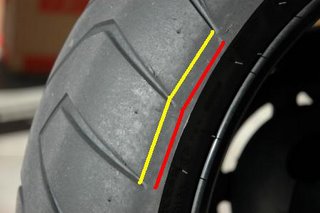Glaciers
It is remarkable in that it ends in temperate rainforest, 250 metres above sea level and a mere twelve kilometres from the sea. The high peaks, snowfields and glaciers of Te Waipounamu (the South Island) are of great significance to Maori who named the glacier Te Moeka o Tuawe. This name derived from a tupuna (ancestor) Tu Awe who fell to his death while exploring the area. The bed of Te Moeka o Tuawe became his moeka (final resting place). It is said that when his lover Hine Hukatere wept, the bed of the valley filled with her everlasting tears of ice. But inevitably it was renamed after a New Zealand Prime Minister, William Fox.
The car park leading to the galcier is featured in the Glenorchy thread. Past this point the track is gentle amble up a steep sided glacial vally, getting colder by the minute. We started in shorts and t shirts, but by the time we got there the fleece and windproof had been added. The terminus of the glacier is a dirty grey from the moraine or stones left as it retreats.
 But the blue underneath is amazing, if you had to draw cold it wouldn't be white but this colour.
But the blue underneath is amazing, if you had to draw cold it wouldn't be white but this colour.
 We stopped the night at the Rainforest Retreat. It was a beautiful setting set amid the lush bush of the west coast. It receives 7m of rain a year so qualifies as a rain forest I guess. The calling of the birds we don't know the names of was both magical and hypnotic. Its a shame therefore that the site itself was a real disapointment. The infrastructure and pitch sites were literally created by felling and blading the forest, then dozing many hundreds of cubic metres of river gravels to form roads. Cheap and effective for campers, a nightmare for putting tent pegs into! And the mozzies, don't talk to me about the mozzies!
We stopped the night at the Rainforest Retreat. It was a beautiful setting set amid the lush bush of the west coast. It receives 7m of rain a year so qualifies as a rain forest I guess. The calling of the birds we don't know the names of was both magical and hypnotic. Its a shame therefore that the site itself was a real disapointment. The infrastructure and pitch sites were literally created by felling and blading the forest, then dozing many hundreds of cubic metres of river gravels to form roads. Cheap and effective for campers, a nightmare for putting tent pegs into! And the mozzies, don't talk to me about the mozzies!

A few k's up the road, and another day another glacier. Franz Josef Glacier was named after the Emperor of the Austro-Hungarian Empire by explorer Julius von Haast. There are many glaciers in the Southern Alps, but Franz Josef Glacier and Fox Glacier are the only two that almost reach the coast. The terminal face of the glacier is currently only 19 kilometres from the sea.
 It is a 40 minute walk from the car park to the terminal face of the Franz Josef glacier. The track follows a rocky path over riverbed.
It is a 40 minute walk from the car park to the terminal face of the Franz Josef glacier. The track follows a rocky path over riverbed.

 I overhead the guide of an adjacent group describe the geology as schist. I thought it was alright. Sentinel Rock (not pictured but a bigger version of below) emerged from beneath the glacier in 1865 and is an example of how the great bed of ice ground the hard schist bedrock into distinctive rounded rocks. Since 1909 the glacier has retreated over 3km and plants have progressively colonised where a veneer of rubble has been dumped over bedrock.
I overhead the guide of an adjacent group describe the geology as schist. I thought it was alright. Sentinel Rock (not pictured but a bigger version of below) emerged from beneath the glacier in 1865 and is an example of how the great bed of ice ground the hard schist bedrock into distinctive rounded rocks. Since 1909 the glacier has retreated over 3km and plants have progressively colonised where a veneer of rubble has been dumped over bedrock.
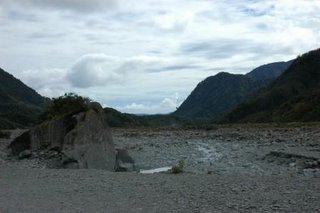









 At the top there is a hotel/visitors centre place. Great view.
At the top there is a hotel/visitors centre place. Great view.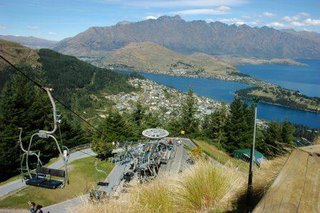


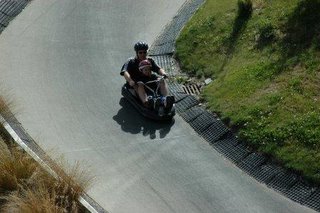
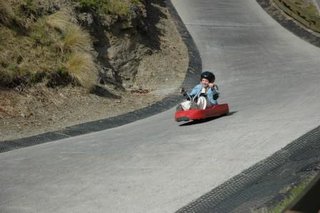


 Yes - it really is a dolphin!!!!!!!!!!!
Yes - it really is a dolphin!!!!!!!!!!!
 Mitre Peak, shown in this picture, is so named because of it's similarity to the bishops headgear of the same name. Is is, supposedly, the most photographed mountain in New Zealand. I can see why!!!!
Mitre Peak, shown in this picture, is so named because of it's similarity to the bishops headgear of the same name. Is is, supposedly, the most photographed mountain in New Zealand. I can see why!!!!











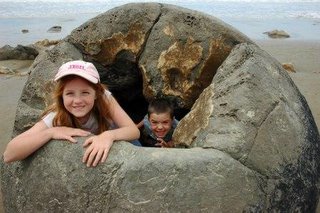

 The morning was damp and miserable. My compadres were all heading back up the way I'd been the day before. They thought the West Coast would be a wet ride. Not knowing if I'd get the chance to ride it again I decided to go for it.
The morning was damp and miserable. My compadres were all heading back up the way I'd been the day before. They thought the West Coast would be a wet ride. Not knowing if I'd get the chance to ride it again I decided to go for it.














 No pics crossing Arthurs Pass, this is the Waimakiri River.
No pics crossing Arthurs Pass, this is the Waimakiri River.

